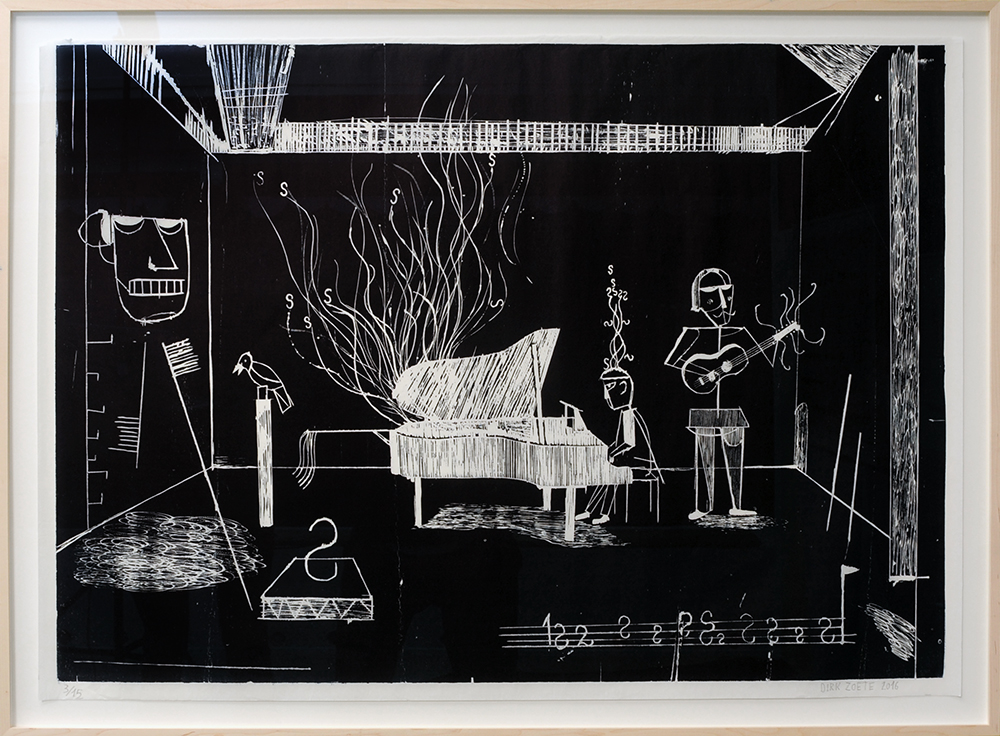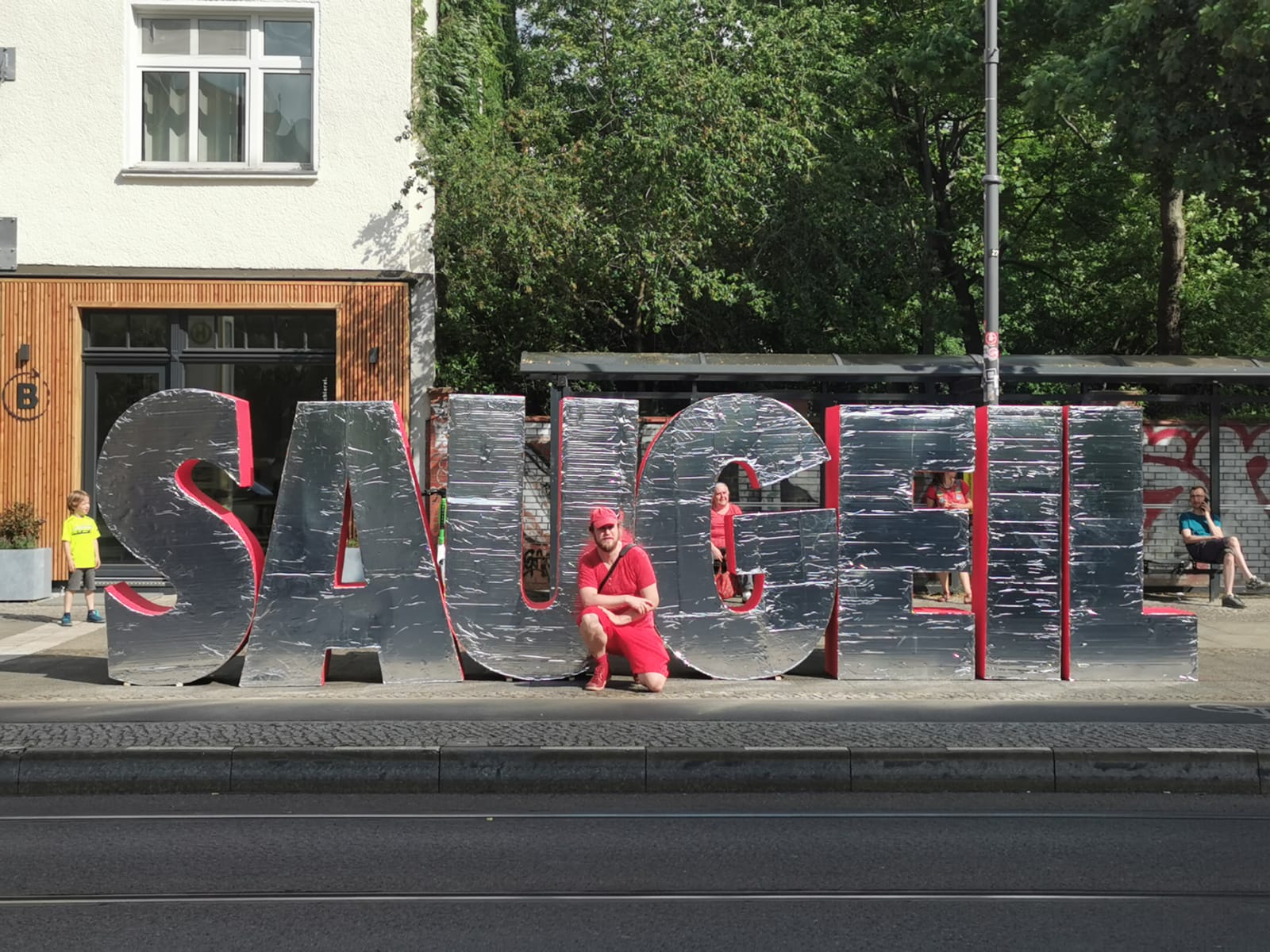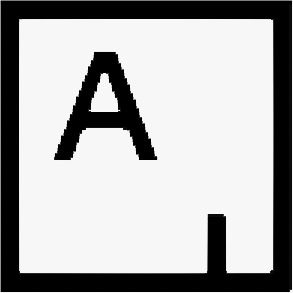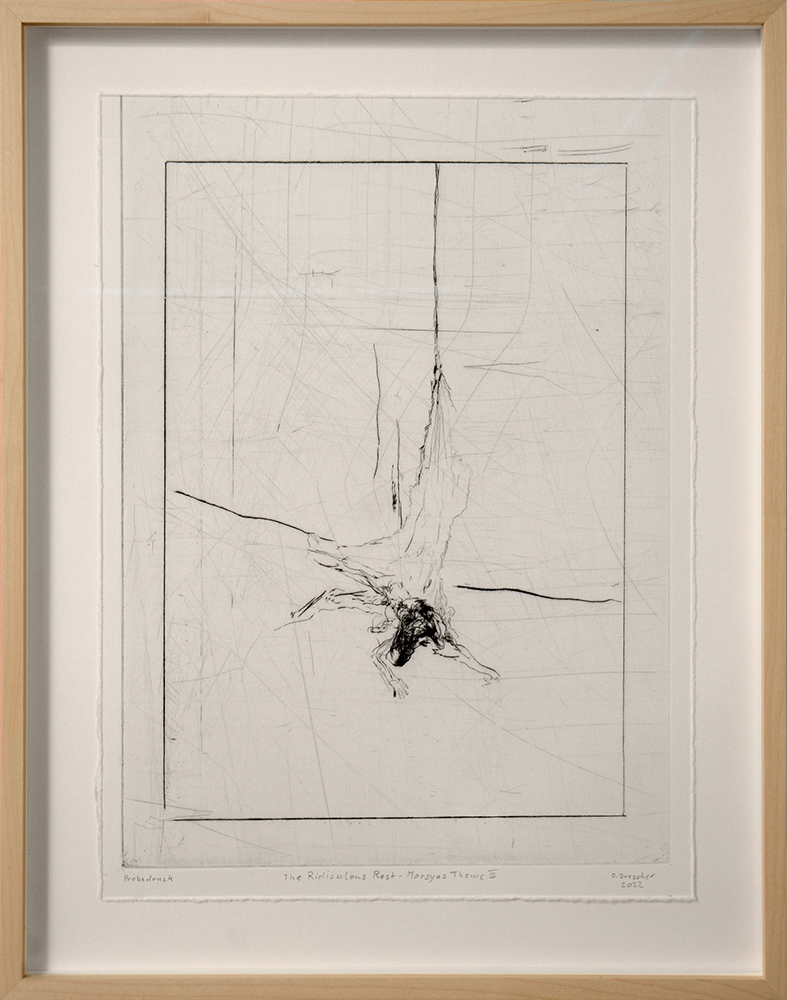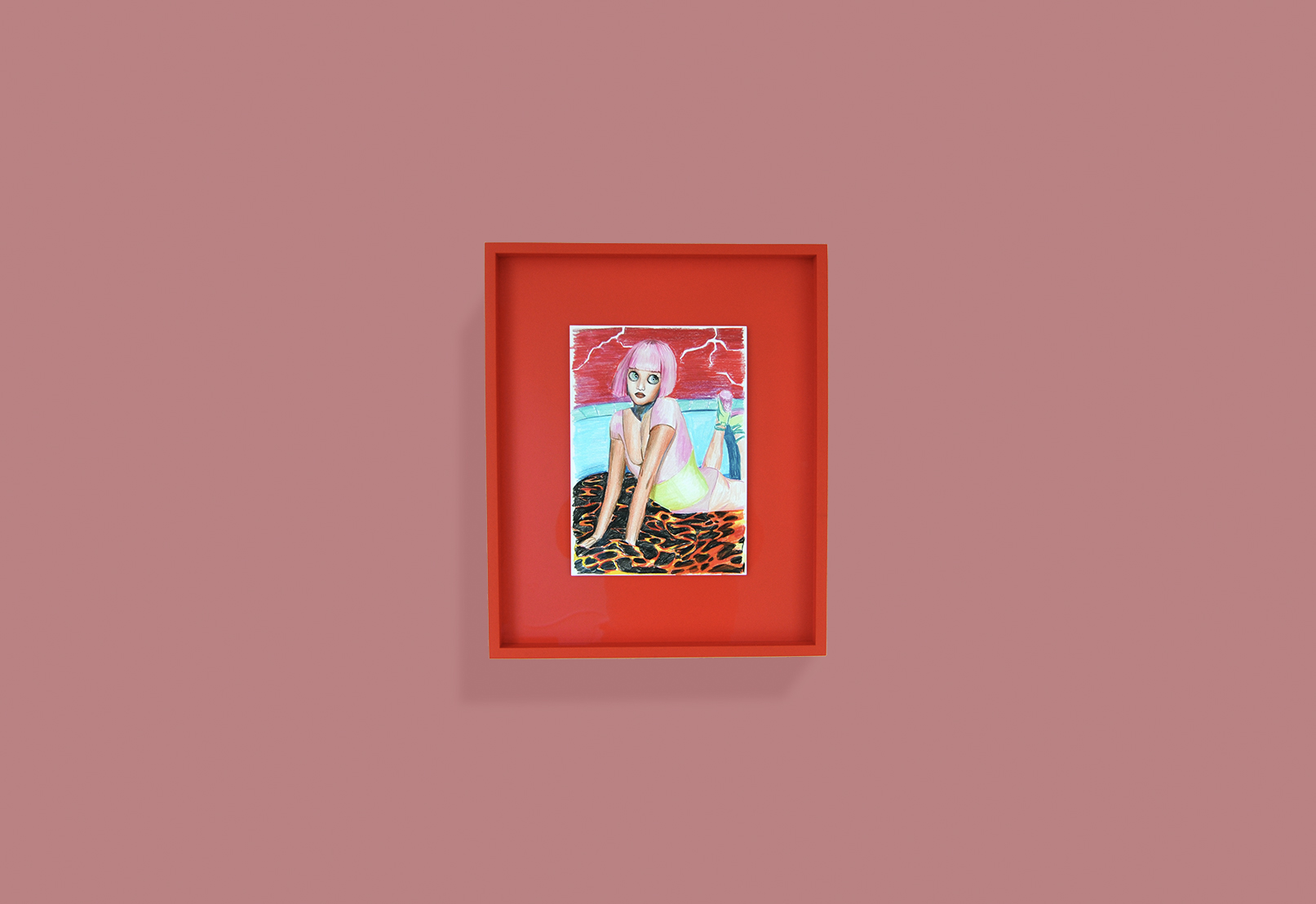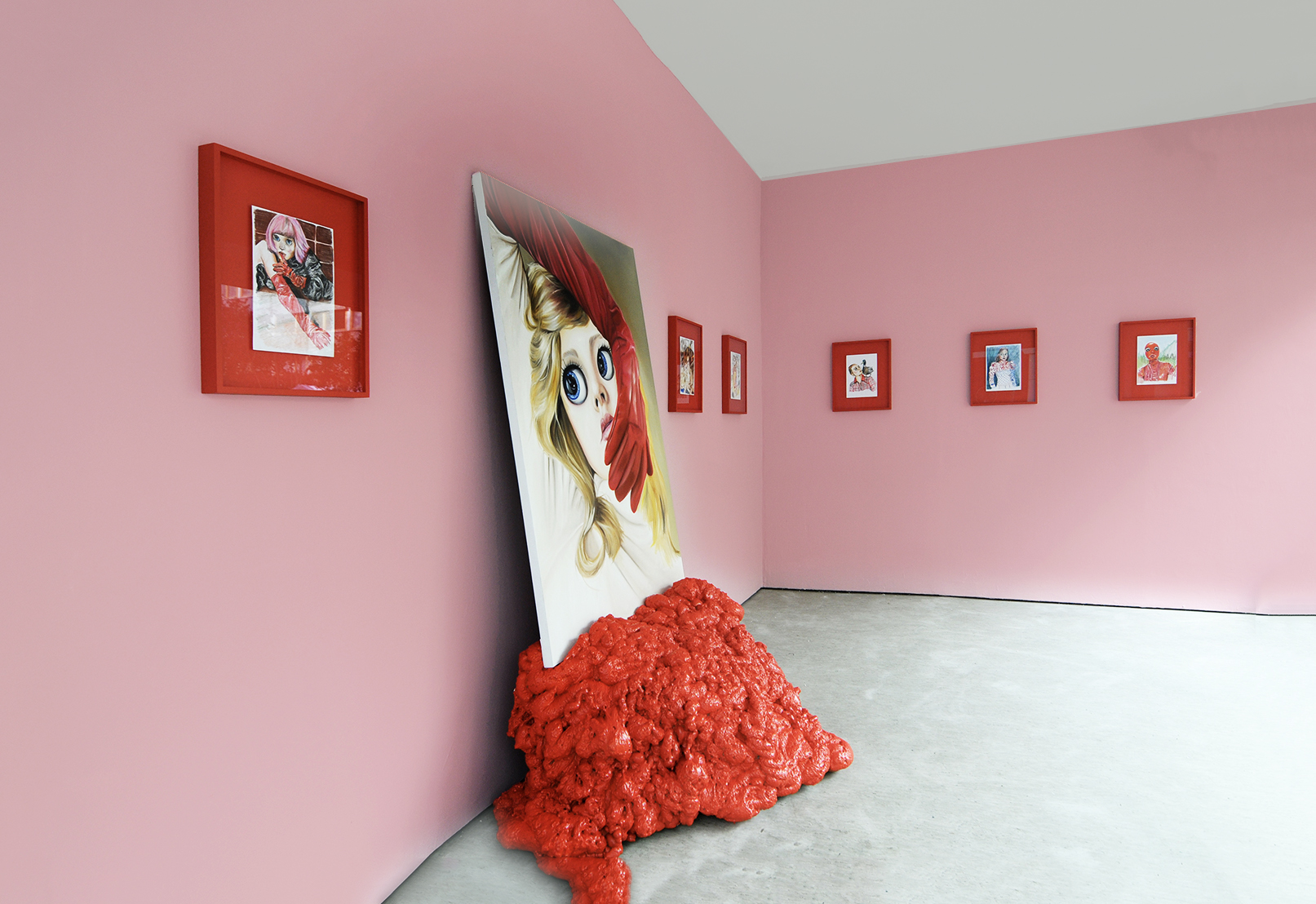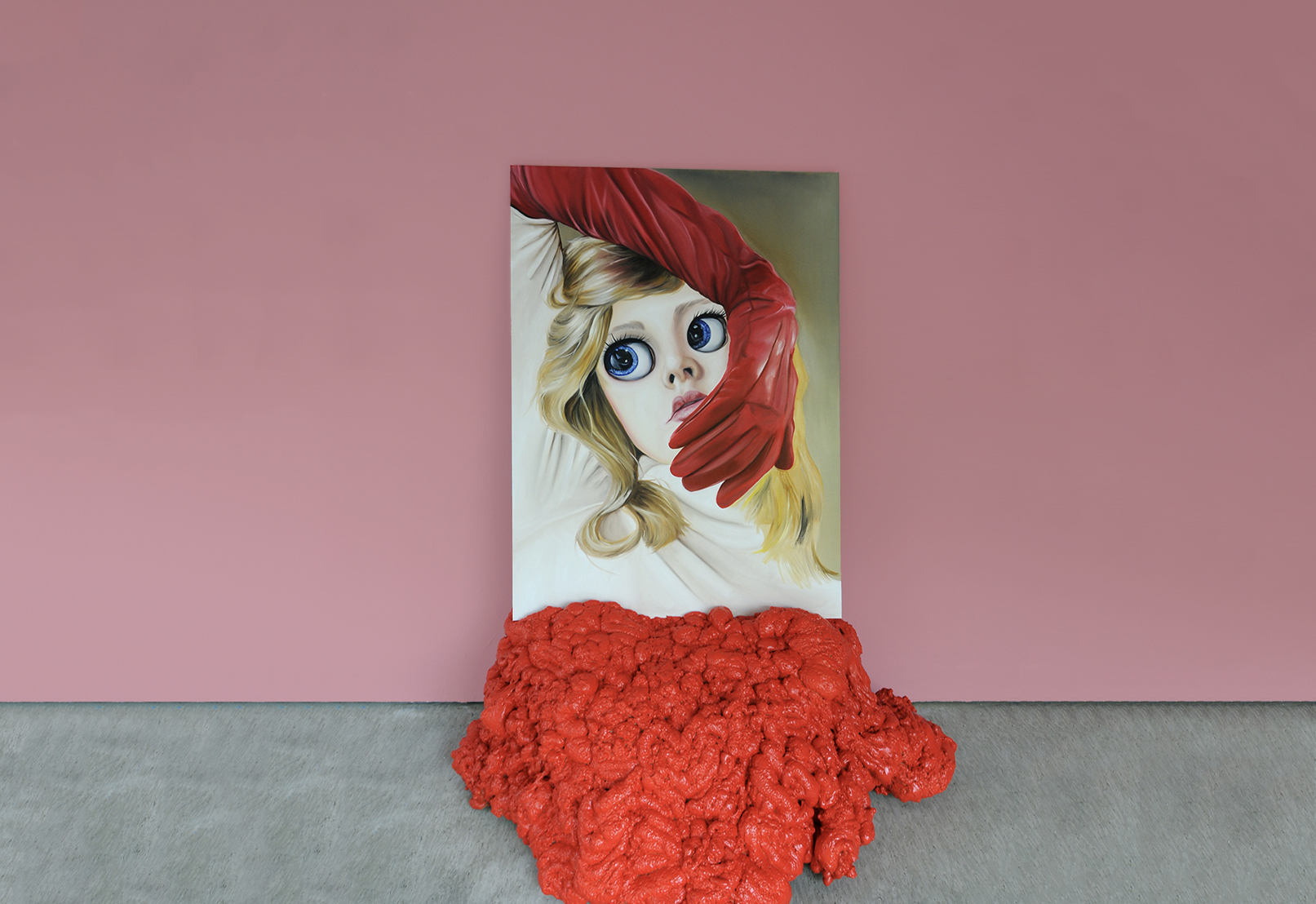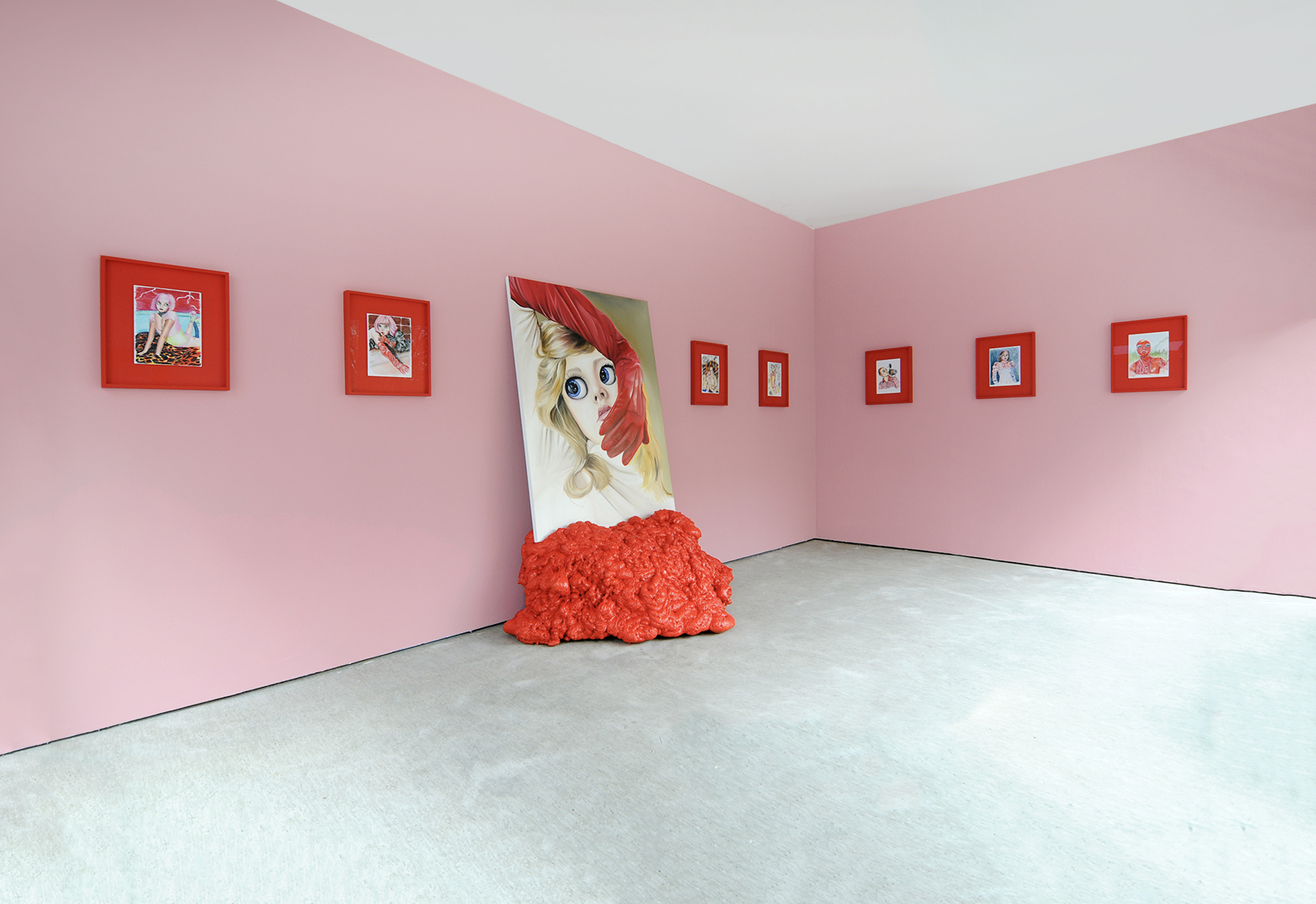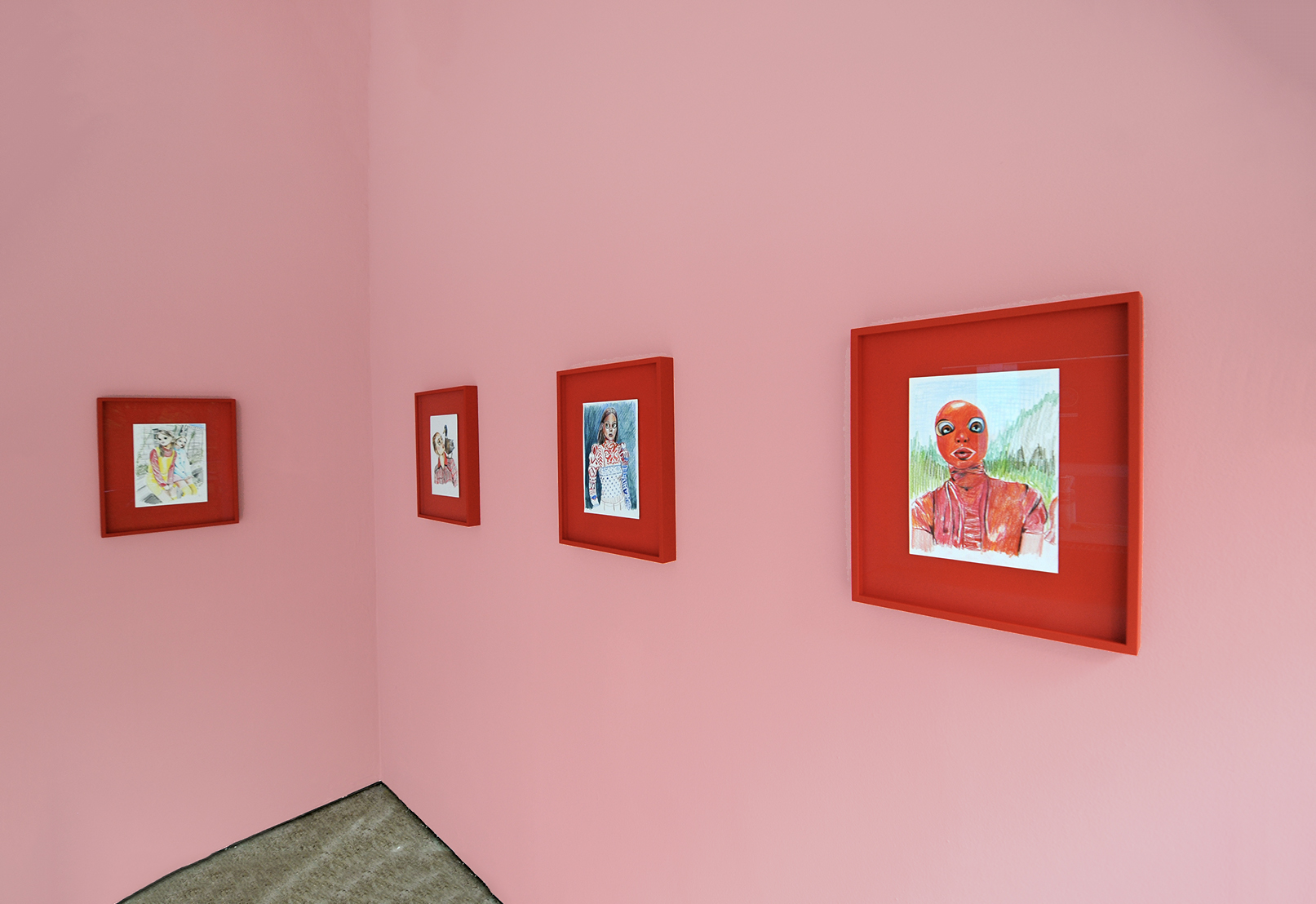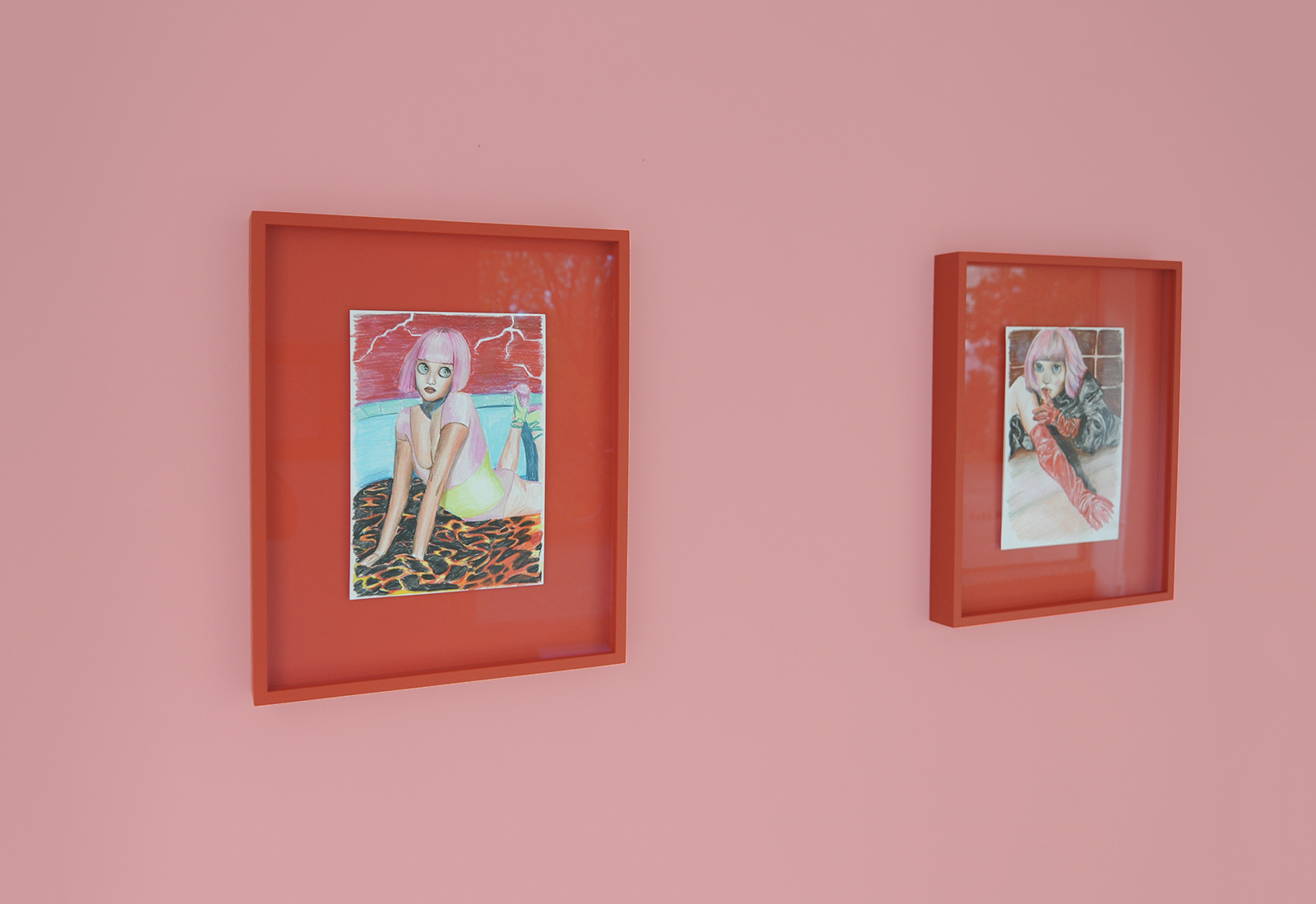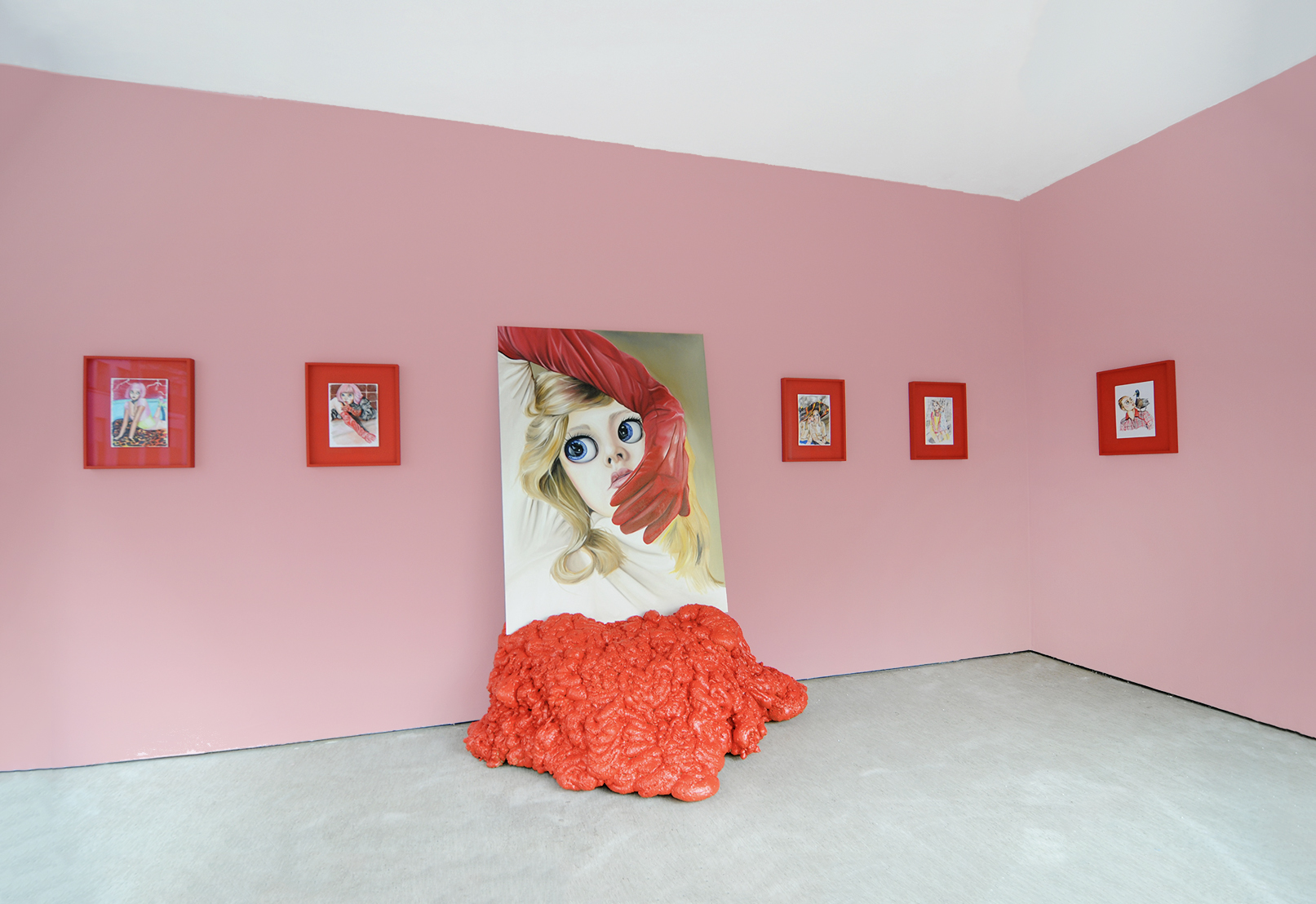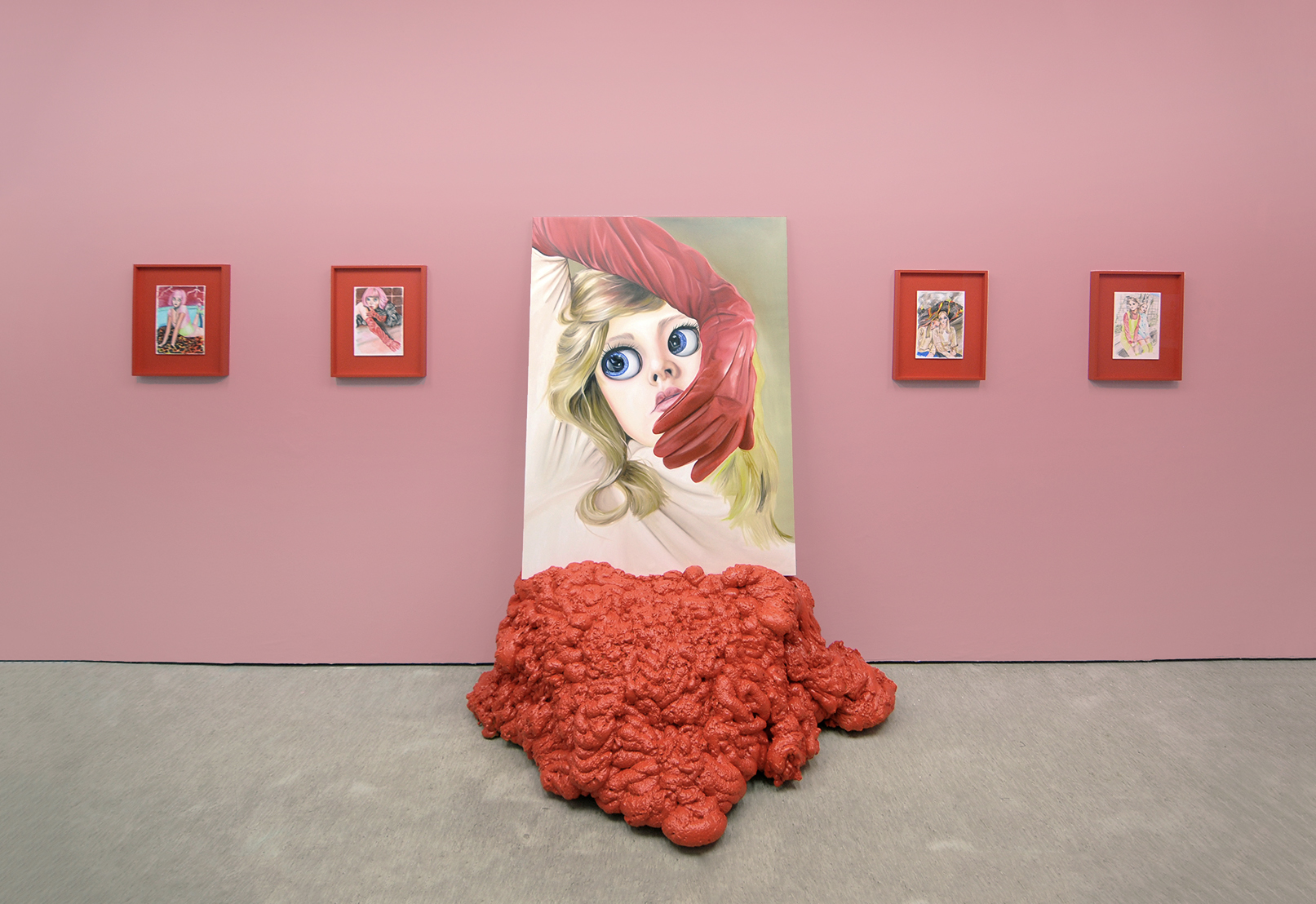Charlie Stein: First Day Above Ground : Verena Kerfin Gallery, Köthener Strasse 28, Berlin 10963
Past
exhibition
Overview
In her latest exhibition, artist Charlie Stein presents a series of works that bridge the gap between contemporary pop aesthetics and the classical art historical tradition of figuration. Central to the exhibition is a large-scale painting, leaning against the wall, partially engulfed by an amorphous red mass reminiscent of lava or organic material. This installation challenges the static boundaries of traditional painting by extending its narrative into the physical space of the gallery.
The visual language of Stein's works draws heavily on pop culture, fashion, and internet aesthetics, employing vibrant palettes and exaggerated facial features that suggest an almost caricatured engagement with the digital self. However, beneath this playful and hyper-modern surface lies a deeper reflection on identity and transformation. The melting red base of the painting, which evokes the flux of organic and artificial material, recalls the baroque fascination with metamorphosis and the grotesque. In this sense, Stein's work can be read as a continuation of historical explorations of the body in flux, as seen in the fragmented sculptures of Gian Lorenzo Bernini or the anatomical votives of early modern Catholicism.
The smaller framed works, mounted on the pink walls surrounding the central painting, expand on this theme. Each piece depicts figures that oscillate between familiar and uncanny, echoing historical portraiture while incorporating the surreal exaggerations of digital editing. These faces, adorned with features and props pulled from online culture, seem to question the viewer's impulse to categorize or define. In this, Stein's figures evoke the fluidity and ambiguity of bodies in Mannerist paintings, where elongated limbs and contorted poses served as metaphors for transformation and instability.
The red frames enclosing the smaller works also play a significant role in the exhibition's narrative. By choosing such a bold and uniform framing device, Stein connects these pieces to the central painting, creating a cohesive environment where the boundaries between individual works blur, mirroring the overarching theme of dissolution and transformation.
Through these visual elements, Stein engages in a dialogue with both contemporary and historical art. The theatricality of her compositions recalls the grand, exaggerated gestures of Baroque painting, while the playful distortion of her figures brings to mind the works of Pop Art pioneers like Allen Jones or Tom Wesselmann. Yet, unlike these predecessors, Stein’s works directly confront the digital age's impact on identity and self-representation, presenting a nuanced critique of the ways we project and perceive the self in an increasingly artificial world.
By situating her figures in a context that defies clear categorization, Charlie Stein invites viewers to reflect on the fluid nature of identity. Her works encourage a renegotiation of traditional boundaries, whether they pertain to gender, authenticity, or the distinctions between the sacred and the profane. As such, the exhibition is not only a celebration of artistic transformation but also a profound meditation on the complexities of being in the digital era.
The visual language of Stein's works draws heavily on pop culture, fashion, and internet aesthetics, employing vibrant palettes and exaggerated facial features that suggest an almost caricatured engagement with the digital self. However, beneath this playful and hyper-modern surface lies a deeper reflection on identity and transformation. The melting red base of the painting, which evokes the flux of organic and artificial material, recalls the baroque fascination with metamorphosis and the grotesque. In this sense, Stein's work can be read as a continuation of historical explorations of the body in flux, as seen in the fragmented sculptures of Gian Lorenzo Bernini or the anatomical votives of early modern Catholicism.
The smaller framed works, mounted on the pink walls surrounding the central painting, expand on this theme. Each piece depicts figures that oscillate between familiar and uncanny, echoing historical portraiture while incorporating the surreal exaggerations of digital editing. These faces, adorned with features and props pulled from online culture, seem to question the viewer's impulse to categorize or define. In this, Stein's figures evoke the fluidity and ambiguity of bodies in Mannerist paintings, where elongated limbs and contorted poses served as metaphors for transformation and instability.
The red frames enclosing the smaller works also play a significant role in the exhibition's narrative. By choosing such a bold and uniform framing device, Stein connects these pieces to the central painting, creating a cohesive environment where the boundaries between individual works blur, mirroring the overarching theme of dissolution and transformation.
Through these visual elements, Stein engages in a dialogue with both contemporary and historical art. The theatricality of her compositions recalls the grand, exaggerated gestures of Baroque painting, while the playful distortion of her figures brings to mind the works of Pop Art pioneers like Allen Jones or Tom Wesselmann. Yet, unlike these predecessors, Stein’s works directly confront the digital age's impact on identity and self-representation, presenting a nuanced critique of the ways we project and perceive the self in an increasingly artificial world.
By situating her figures in a context that defies clear categorization, Charlie Stein invites viewers to reflect on the fluid nature of identity. Her works encourage a renegotiation of traditional boundaries, whether they pertain to gender, authenticity, or the distinctions between the sacred and the profane. As such, the exhibition is not only a celebration of artistic transformation but also a profound meditation on the complexities of being in the digital era.
Installation Views
×
![]()
×
